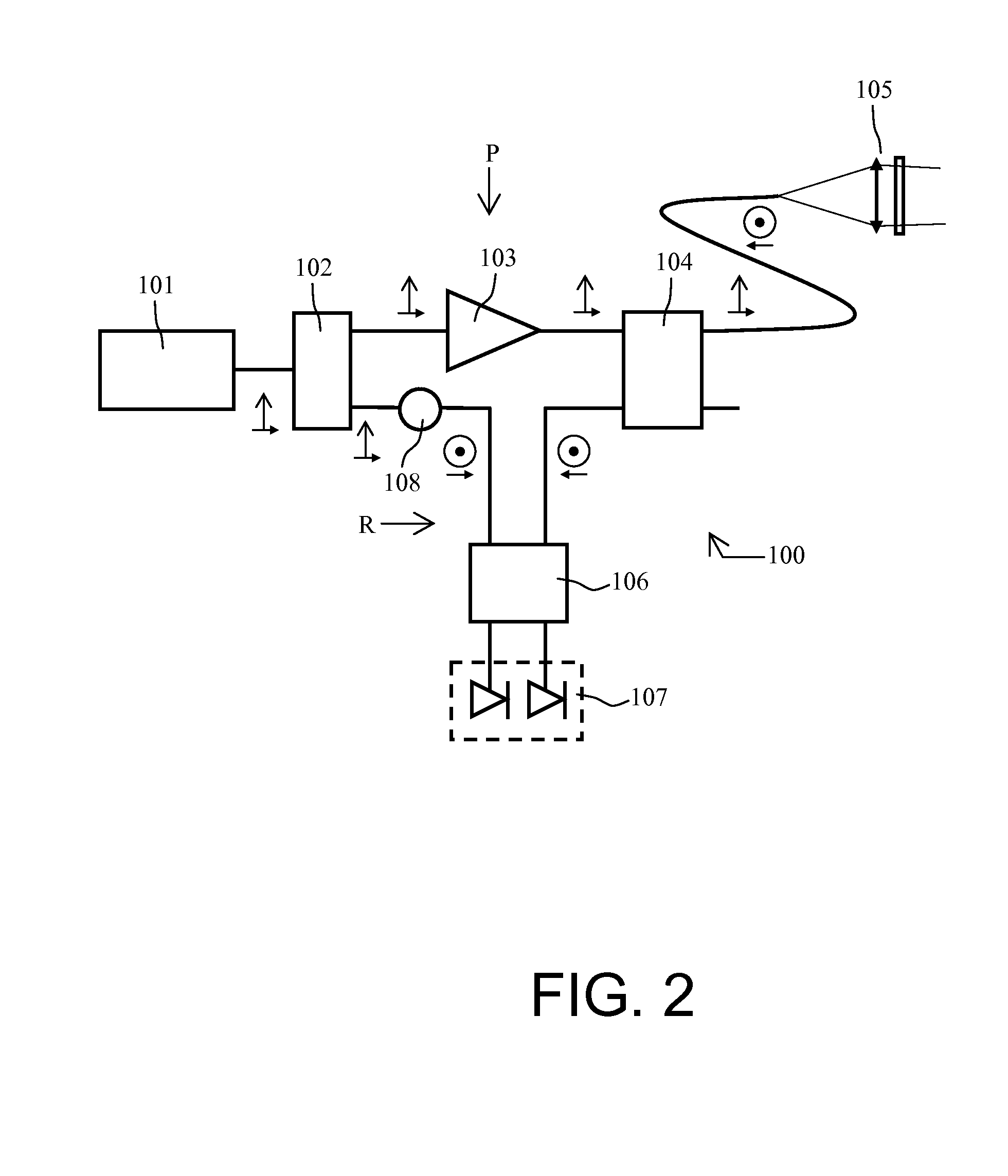Optical anemometric probe with two measurement axes
an anemometer and optical anemometer technology, applied in the field of optical anemometer, can solve the problems of complex solutions and high cost, and achieve the effect of reducing these drawbacks
- Summary
- Abstract
- Description
- Claims
- Application Information
AI Technical Summary
Benefits of technology
Problems solved by technology
Method used
Image
Examples
Embodiment Construction
[0051]By way of example, FIG. 3 represents a first optical architecture of a LiDAR “with two optical heads” according to the invention. It essentially comprises a laser source 201 emitting a linearly polarized primary light beam, an optical block 220 and an optical measurement pathway 230 which are detailed hereinbelow.
[0052]The laser source 201 provides a linearly polarized primary reference wave. In FIG. 3, the direction of polarization of this wave is in the plane of the sheet.
[0053]The optical block 220 includes:[0054]Optical means 210 of rotation of the polarization arranged at the output of the laser source, these optical means of rotation of the polarization making it possible to rotate the plane of polarization of the primary light beam by a known angle;[0055]A splitter device 202 separating the polarized reference wave provided by this source 201 into two secondary beams, the first secondary beam passing through an optical reference pathway, the second secondary beam passin...
PUM
| Property | Measurement | Unit |
|---|---|---|
| optical anemometric probe | aaaaa | aaaaa |
| relative altitude | aaaaa | aaaaa |
| speed | aaaaa | aaaaa |
Abstract
Description
Claims
Application Information
 Login to View More
Login to View More - R&D
- Intellectual Property
- Life Sciences
- Materials
- Tech Scout
- Unparalleled Data Quality
- Higher Quality Content
- 60% Fewer Hallucinations
Browse by: Latest US Patents, China's latest patents, Technical Efficacy Thesaurus, Application Domain, Technology Topic, Popular Technical Reports.
© 2025 PatSnap. All rights reserved.Legal|Privacy policy|Modern Slavery Act Transparency Statement|Sitemap|About US| Contact US: help@patsnap.com



